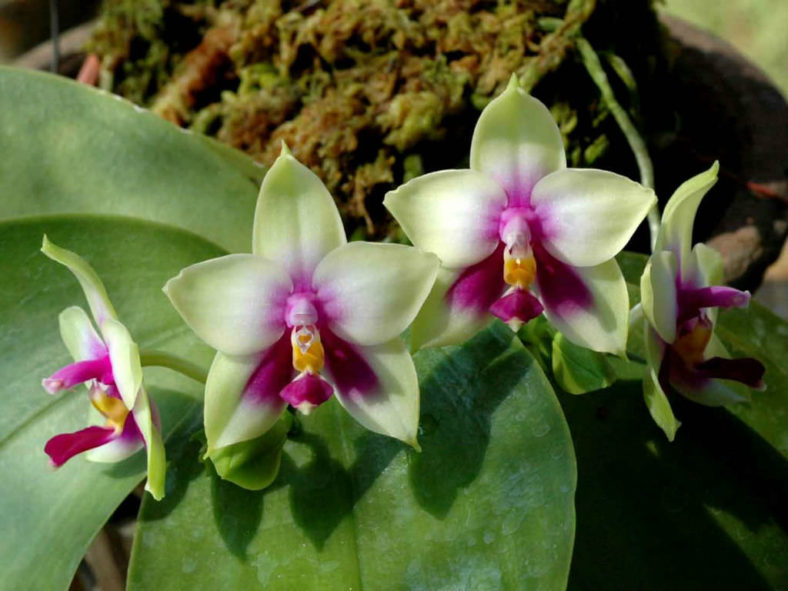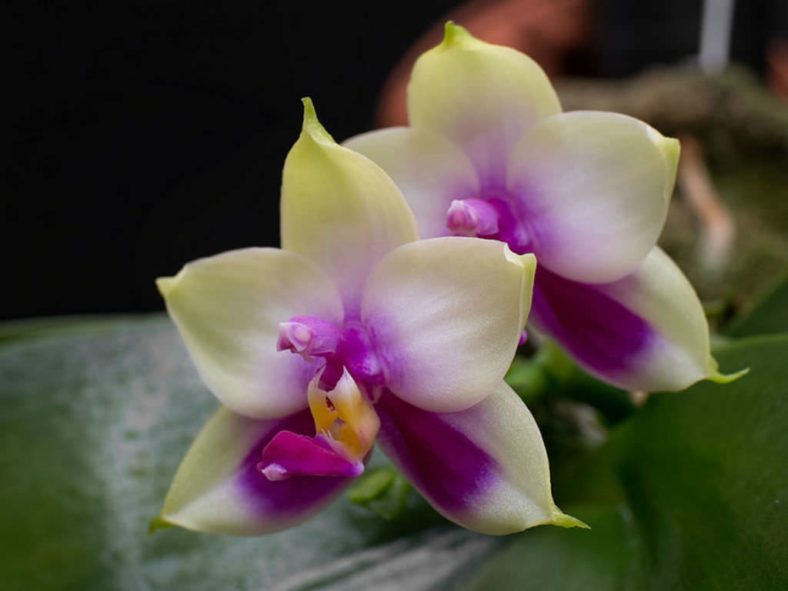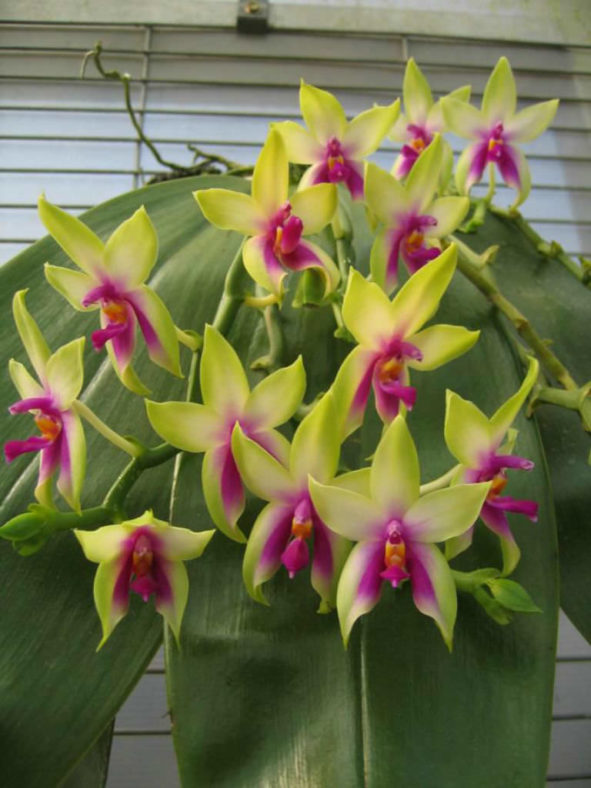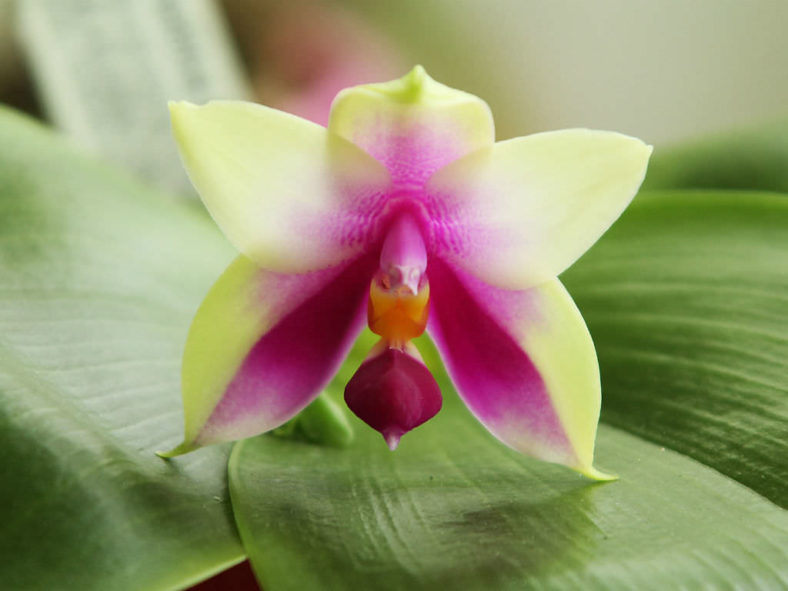Scientific Name
Phalaenopsis bellina (Rchb.f.) Christenson
Synonym(s)
Phalaenopsis violacea var. bellina
Scientific Classification
Family: Orchidaceae
Subfamily: Epidendroideae
Genus: Phalaenopsis
Subgenus: Phalaenopsis
Flower
Color: Green and purple
Bloom Time: Summer to fall
Description
Phalaenopsis bellina is a monopodial orchid with glossy light green leaves that appear to be slightly wavy. With age, the leaves grow up to 12 inches (30 cm) long and downward. Each year, the plant will produce 1 or 2 new leaves, and the bottom leaves will dry and fall regularly.
The flowers are displayed on a short compact spike that emerges from between the leaves are elongates forward. They are waxy green and purple, up to 2 inches (5 cm) in diameter.

Hardiness
USDA hardiness zone 11a to 12b: from 40 °F (+4.4 °C) to 60 °F (15.6 °C).
How to Grow and Care
Phalaenopsis are generally very rewarding plants. They are not demanding, and, in the right conditions, they will reward the grower with months of showy blooms. It is vitally important. However, that water never is allowed to rest in the growing tip of the plant. This will cause the new leaves to rot, and the plant will die. Thus, they should only be watered in the morning. As with all Orchids, the higher the humidity and temperature, the greater the need for turbulent airflow to prevent rot, fungus, and diseases. Successful growth means finding the right balance between humidity, temperature, light, and airflow.
Phalaenopsis can be grown in most Orchid potting media, including chunks of pine bark, clay aggregate pellets, charcoal, perlite, sphagnum moss, and styrofoam. They can also be grown in hanging baskets or mounted on slabs in a greenhouse-type environment. As with all Epiphytic Orchids, they should be planted in free-draining containers. Repot Phalaenopsis in spring, after the bloom is done. Adult Phalaenopsis can often go for two years or more before they need to be repotted.
See more at How to Grow and Care for Phalaenopsis Orchids.
Origin
Phalaenopsis bellina is native to Malaysia and Borneo.
Links
- Back to genus Phalaenopsis
- Plantpedia: Browse flowering plants by Scientific Name, Common Name, Genus, Family, USDA Hardiness Zone, or Origin
Photo Gallery
Click on a photo to see a larger version.




